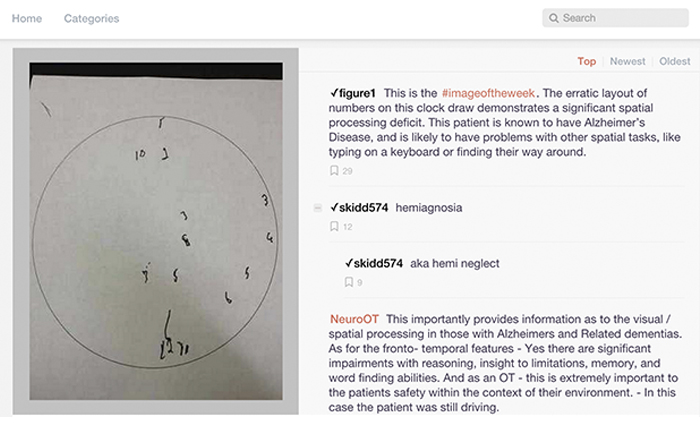
The mysterious beauty of a hand-drawn clock, demonstating the spatial incoherence in a patient diagnosed with Alzheimer's
In the highly rarified, specialty-specific and profoundly serious world of medicine, diagnosis is a critical task. The idea that part of this task is visual might come as a surprise, but only because it is so stunningly obvious.
Observation is at the core of all inquiry, and clinicians understand this. What's novel is that there is now a public, online library where a physician's observations can combine with your own. Figure1 features an astonishing gallery of medical images: from casual snapshots grabbed in the emergency room to extraordinarily complex MRIs and X-rays, these pictures constitute, both individually and collectively, a spectacular portrait of the seldom-seen. These are real selfies, brutal and disturbing at times, occasionally comical, often bizarre, but also magical and mesmerizing—and many of them, unforgettable.
More astonishing even than this, however, is the fact that these images are public. Identities concealed and HIPPA laws protected, this is, nevertheless, an unprecedented kind of crowdsourcing. (You have to be a medical professional to comment, but still.) At a moment in history when Instagram can claim 300 million monthly users, you have to wonder what's coming next—and what it will look like.
